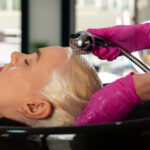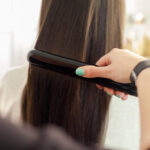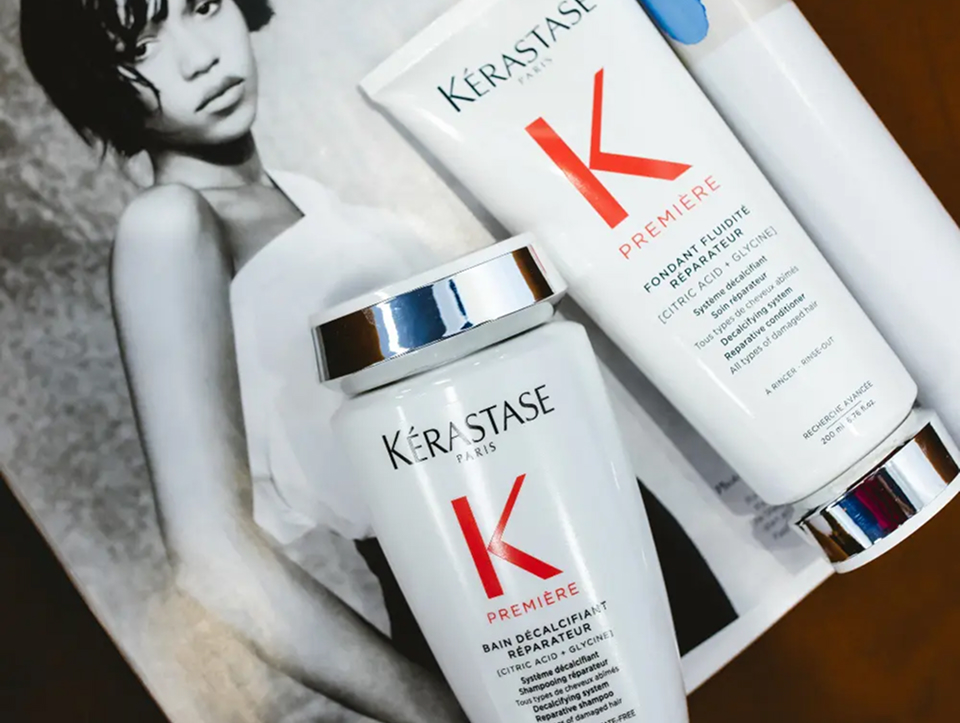As a hair wellness spa, we know that a balanced scalp leads to healthy hair, but scalp problems can be concerning. You can find common scalp conditions, some of which can lead to dry scalp or worse, such as dandruff and hair loss, which can leave you self-conscious.
Sometimes, they become itchy and painful, and we always sympathize with our clients. But if you are unaware of the scalp problems you can face, we have outlined them here, along with their causes and treatments.
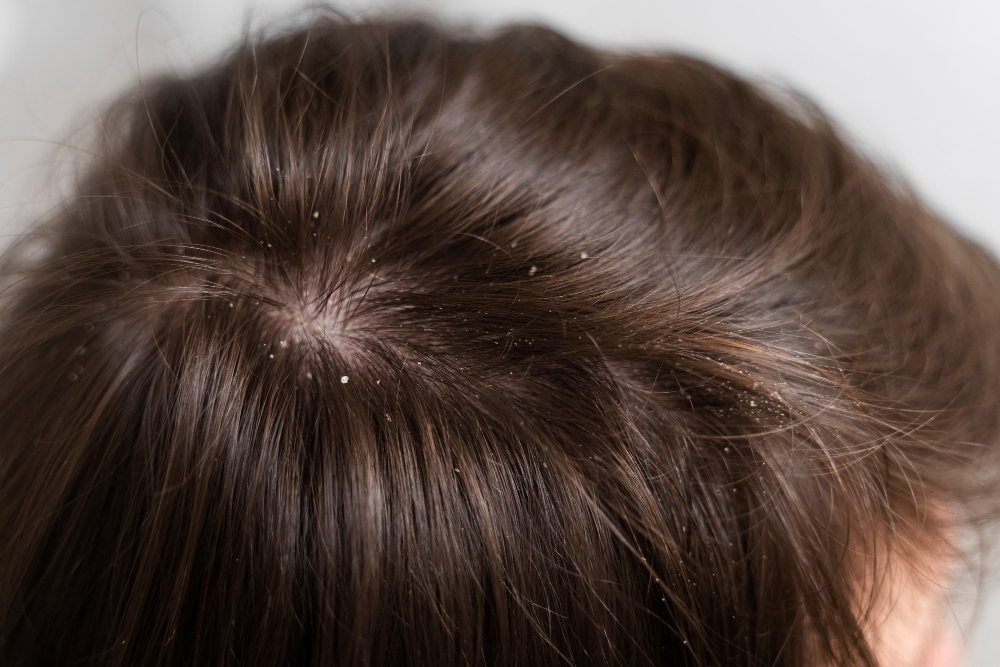
1. Dandruff
Dandruff, known as seborrheic dermatitis, is one of the most common scalp conditions. In babies, it is called cradle cap, while in adults, it results in red, itchy patches with an oily scale or flakes.
It is called Seb Derm in adults when it affects the nose, ears, chest, or face. It can come and go and is triggered by seasonal changes and stress, but tends to worsen in early spring and winter. A noticeable thing about Seb Derm is that you have a greasy scale with dandruff flakes.
This common scalp problem can be caused by a yeast called Malassezia, which is found in the skin’s oil secretion. Even obesity, which weakens the immune system, can cause dandruff.
One thing we’ve found when treating dandruff is that it sometimes starts with dry skin, turns into flakes, or is caused by sensitivity to certain hair products.
Treatments:
- We can treat dandruff with scalp therapy to some extent, but it will depend on the severity of your condition.
- A prescription-strength ketoconazole anti-yeast shampoo can help. However, we recommend applying it directly to the scalp for 10 minutes before you wet your hair. Then, lather it on only the scalp area, and dry and rinse the hair. Finally, follow it up with a moisturizing shampoo and conditioner.
- You can also use OTC lotions and shampoos containing zinc pyrithione, sulfur, or ketoconazole. Check out our detailed article on choosing the right dandruff shampoo for your scalp and hair.
- Lastly, a topical steroid can be prescribed if the shampoo does not help.
2. Itchy Scalp
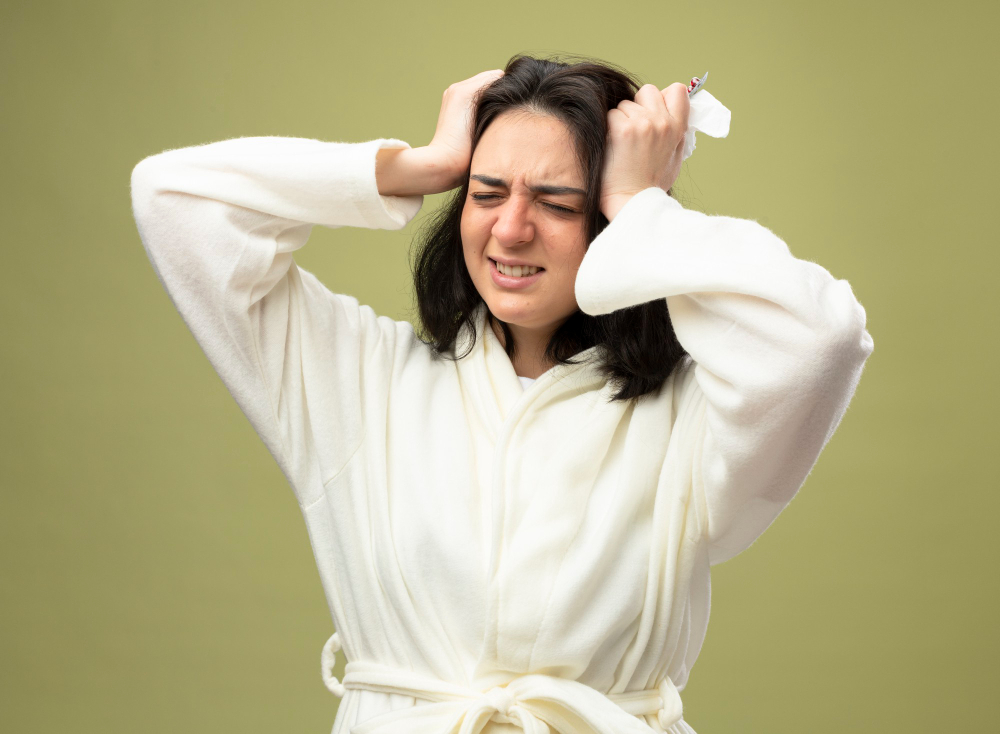
We all experience itchy scalps. At our hair and scalp spa, we offer treatments for an itchy scalp. Still, if your symptoms remain consistent, we recommend visiting a dermatologist.
Harsh shampoos, dehydration, or environmental factors can cause an itchy, dry scalp. Another concern is allergic contact dermatitis, which occurs when the scalp comes into contact with ingredients that irritate the skin.
Treatments:
- We recommend doing a patch test before using new hair care products.
- Use a gentle conditioner and sulfate-free shampoo, and slowly introduce your other products to determine the cause of your reaction.
3. Buildup and Oil
Excess oil production is another common scalp condition we see at our hair and scalp spa. When your scalp has oily roots, your tresses feel dirty and heavy. A healthy scalp can accumulate dead skin, product residue, and oil.
In turn, it suffocates the follicles, disrupting your hair growth. To some extent, buildup and oil are expected a few days after washing your hair. But if you wash your hair and find an overproduction of oil the next day, it can be a result of an overreactive sebaceous gland or using the wrong products.
Treatments:
- We recommend using a dry shampoo to revive the roots and a quality clarifying shampoo to help remove the residue from your scalp.
- However, if your scalp produces too much oil, you don’t want to strip it of its natural moisture, so you should avoid using clarifying shampoos daily, as they can remove the necessary oils from your scalp.
- You can also visit us for a scalp detox treatment to help remove the buildup and enjoy a luxurious massage.
4. Psoriasis
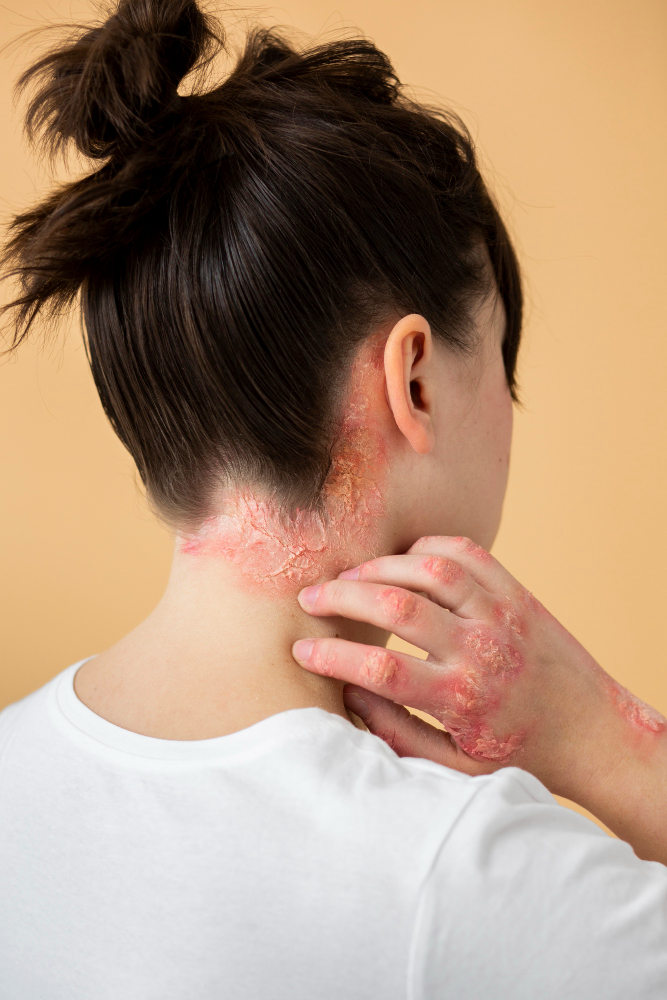
Psoriasis is an autoimmune scalp condition characterized by red, scaly patches. It is a chronic inflammation that cannot be cured but can be managed.
Although it can appear on any part of the body, it isn’t easy to treat on the scalp. Conversely, stress can worsen the problem by increasing the cortisol hormone and boosting inflammation.
Treatments:
- You can use topical steroids to control inflammation, and they are a standard treatment.
- Or you can get a biologic injection to suppress the flare-ups.
- Alternatively, an excimer laser can be used on individual spots.
- Also, invest in a gentler hair routine by washing your hair less frequently.
5. Folliculitis
This common scalp condition is caused by an infection or inflammation of hair follicles. A fungal or bacterial infection often triggers it. Many people mistake it for acne, which can be painful and resemble blocked pores on the face.
The good news is that you can treat it at home, but if you have a severe case, you will need oral antibiotics and a topical prescription.
Treatments:
- Shampoos containing salicylic acid and zinc pyrithione can treat folliculitis. These ingredients have antifungal and antibacterial properties, helping to combat infections.
- Another helpful thing is to follow a scalp exfoliation treatment.
6. LP Scalp Condition
Lichen planus is a scalp disorder that affects the skin and mucus membranes. It can also be found anywhere on the body. Small red or purple irritated bumps are found on the scalp, sometimes leading to hair loss.
Unfortunately, no one is sure what causes LP. Still, in rare cases, you find it in people with Hepatitis C. Taking certain medications can also lead to LP, and genetics is another concern.
Treatments:
- You can use a topical treatment, such as retinoic acid, corticosteroids, or tacrolimus ointment. Alternatively, a pimecrolimus cream also helps.
- You can take retinoic acid or antihistamines in oral form.
- You can also get PUVA therapy, in which you soak specific skin parts in a water solution containing plant compounds, making them more sensitive to UVA rays. The affected areas are then exposed to UVA light.
7. Hair Loss
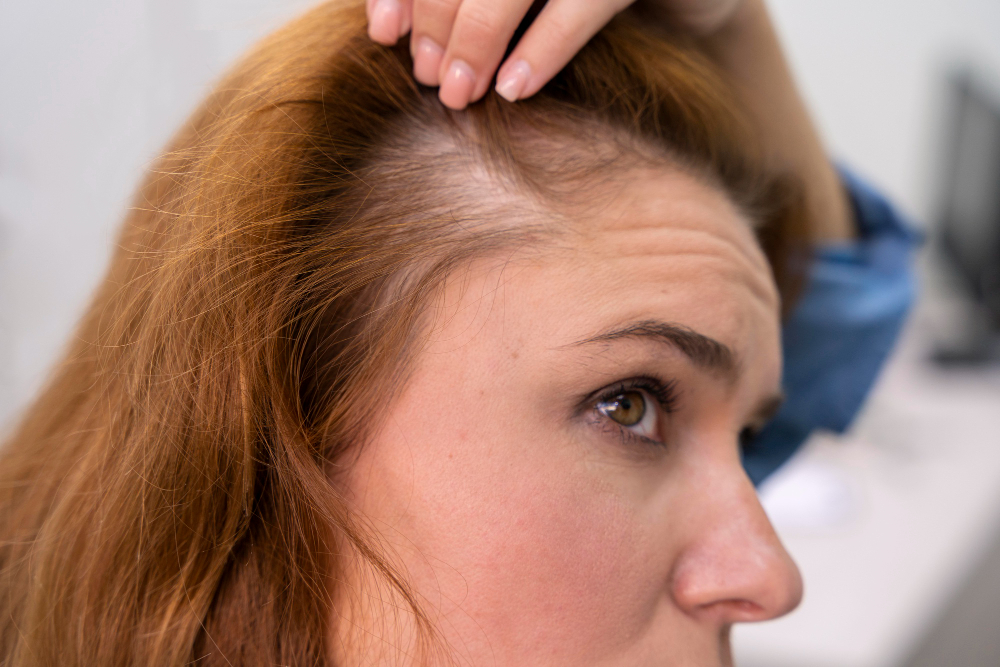
One of the most common scalp conditions is hair loss, which can be caused by a variety of factors. These can include medication, hormonal abnormalities, genetics, or fragile hair. Here at Haste, we offer the best scalp treatment for hair loss, which can involve using scalp serum.
However, if you experience severe hair breakage or shedding and notice bald spots, it’s best to visit your dermatologist to evaluate the condition.
Treatments:
- Eat a well-balanced diet and discuss with your doctor if you might have an iron deficiency.
- You can use Rogaine, which helps thicken your hair, or take spironolactone pills.
- Also, avoid wearing too many protective styles, as this can result in hair loss over time.
Wrap-Up: Common Scalp Conditions
A healthy scalp and hair are essential. Caring for your scalp can create a healthy environment that allows your hair to grow to its full potential.
Still, having one of the common scalp problems mentioned can damage your hair and cause thinning or hair loss.
If you notice any signs of these scalp conditions, contact your healthcare provider for assistance. But if you want to prevent the above, visit us for the best scalp treatment in Boston. We will provide you with a professional scalp analysis.
By caring for your scalp, you can remove buildup, dry flakes, and debris, which helps improve blood circulation and creates a healthy environment for your hair to grow.
FAQ
What are the most common scalp problems?
The skin is the cause of most common scalp problems, including the density of hair follicles and a high rate of sebum production. These can lead to dandruff, tinea capitis, psoriasis, etc.
What is a top scalp concern?
The top scalp concerns are dandruff, sensitive scalp, oily scalp, and hair thinning.
How do I know my scalp is unhealthy?
You will know your scalp is unhealthy if you see redness, itching, flakes, pain, or excessive hair loss.


